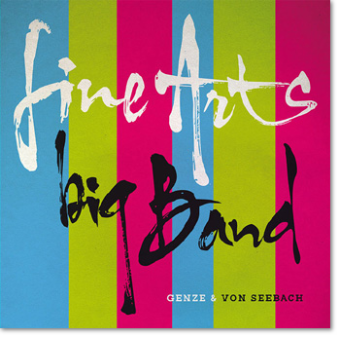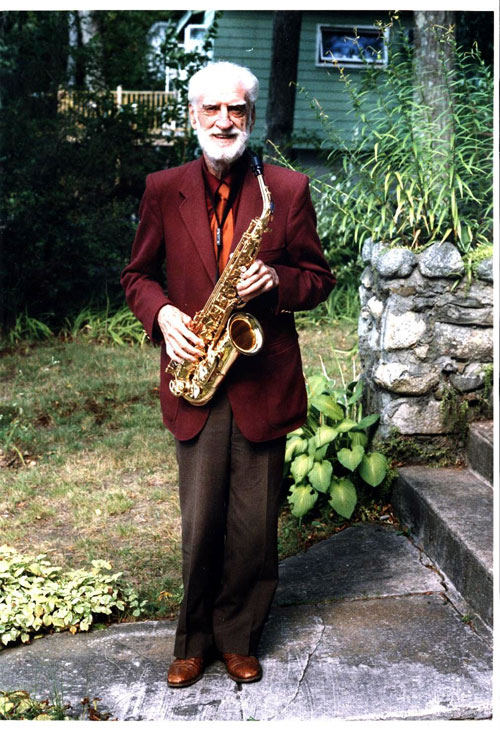Have you ever noticed that just because we know something is good or important for us it often doesn’t lead to actually doing something about it. Kids are like us but even more so. There is no you that knows what is best for you, this the grand illusion of consciousness. There is what you do and the quiet noise that exists between your ears.
A child wants to play, that’s why they sit there with an instrument in their hands.
No one is born knowing how to practice.
Practicing means to be ones own teacher.
With that said, when a child is at home they may have an urge to play w-i-t-h the saxophone. Everything that they actually do with the instrument after they open the case has to do with what they can immediately access from memories created in the lesson. Students don’t think in concepts like “long tones for tone” or “scales” or “arpeggios” or “excerpts” etc. These are names for things that one can already do. Learners need to be able to have at their fingertips a specific activity.
If the teacher works with a student on one thing for the whole lesson then boredom is sure to follow. Bored people don’t learn, they daydream or sleep. I did. Don’t think of it as “a person” learning, think of it as nerves, muscles and brain material learning. Those things learn best in the first few minutes when the activity is most difficult. They (the nerves, muscles and brain material) are no longer learning when it is easier. Repetition at this point is just ego having its moment. It also sends a strong message which is “I am great, don’t need to practice this, It’s practiced”
With memory there is no such thing as “burning it in” through repetition. What actually happens is that the student is burned out through long repetition, making it much harder to start again at home. The “burn in” comes through repeated accessing, which is a process of forgetting and remembering. This is how the brain decides which information should be shifted from short term to long term memory. It is the long term stuff that the child will practice. It is the long term stuff that the adult student will remember and play years later when they want to restart playing.
If you do at least four different things in rotation during the lesson it is actually practicing forgetting/remembering, or repeated accessing of the information. If the information is easier to access (because they have practiced this) then when the student goes home and opens the case (because they like the instrument), the first thing to do is already there as a clear physical/aural memory pulling them to play. No thinking about names or vague concepts that are supposed to be good and important, no reasoning, fighting, thinking, ignoring, just action.
There is a big gulf between a (vague) notion to practice “scales” and having ready access to an actual exercise that the hands and ears remember. These are two very different ways of knowing scales. “Think once, remember many” Your job is to think once and get the student to remember many – many times.
Category: Uncategorized
Fine Arts Big Band is on line
We played our first concert in the A-Trane on the 18th of January to two packed sets. All original music and arranging, and a band full of great soloists as well.
Visit the Fine Arts Big Band
or go directly to my behind the scenes photos.
Workshop on Saxophone Sound and Jazz Time is very full…
Just a reminder that the workshops for Saxophone Sound and Jazz Time on the weekend of the 7th and 8th of February are almost full, just one active place for Saxophone Sound and two places for Jazz Time are available. There are still places for passive participation available as well.
I am really looking forward to the workshop and have planned a few surprises…
David
Advice to a saxophone player…
Here is a little advice recently given to a saxophone player struggling with approach notes and II-7 V7 Imaj’s:
“I’m trying to get all of my 251s down with chromatic surrounds, but from the root, 3rd, 5th, and 7th. I’ve been practicing a lot but it doesn’t seem to be getting easier for me. Any suggestions?”
GC
If a progression is too difficult then break it down into something manageable. V7 -> I or just V7. Start by approaching the flat7 of the V chord with a rhythmic / syncopated idea.
Make music, not boring exercises.
When the 7th gets a bit easier then add an approach to the 3rd of the I chord. This is voice leading and is melodically strong.
Approach the 7th and then the 3rd of the V chord (or the 3rd and 7th) and then resolve to what sounds and feels right. If you touch the 3rd and 7th of the V7 chord anywhere in your line your ear will help you resolve. Everything will sound right.
Keep your “improvisations” within the range of a 5th or in just one area of the horn, this way you learn to play through the chords and not “up and down” the harmony.
It helps to sing a (syncopated and therefore musical) line and visualize the fingerings – even slightly move the fingers – in all keys. Sometimes play the notes to see if you are right in what you imagine and hear.
Sing (scat) a simple syncopated rhythmic idea and then add a few approach notes to the syncopations. If you don’t know any rhythmic ideas then listen to the older Basie recordings, they are full of great riffs. You can also check out the trombone parts in New Orleans marching bands, often referred to as the 2nd line. Steal the syncopations and add a few nice approach notes and chord tones.
Change keys every three minutes. Remember – you are practicing “the changes” – so start stringing chords together, practice changing. Follow the cycle C7 -> F7 -> Bb7 etc.
Use a simple set of changes – the A section of an easy standard – and spend 3 minutes in each key making music and finding the voice leading, the nice notes. Don’t worry if the first few times through the changes, especially in distant and unfamiliar keys, you don’t play anything cool. The nice voice leading notes will eventually come to you, usually when they are ready, after the 3rd or 4th time through the sequence. Be patient with the musician in you.
The tendency is to try and play all of the approach notes while practicing. Don’t. It isn’t musical and you would never actually solo that way. Simplify your playing. Practice ideas for shorter periods spaced over a longer time. It is better to come back to an idea three or four times in a practice session than obsess on it for thirty minutes in one shot.
Keep a log of what it is you are working on.
Now go practice – even though it’s Christmas.
D.
Joe Allard
Although I have never had the pleasure of meeting or studying with Joe Allard, I must admit that his concepts and methods have – through the media of video and antidote – influenced my approach to both learning and teaching to a very large degree. I highly recommend that any serious student of saxophone and clarinet investigate deeply the material to be found at the following addresses:
www.joeallard.org/pedagogy.html
It is my strong opinion that Mr. Allard expounds the most flexible and practical method of playing woodwind instruments to date, no matter what style one expresses ones self in. As always, anyone who is learning to play an instrument must adapt and make the information that they believe to be true their own. I think that, as a woodwind player, one should try to understand and put into practice that which Mr. Allard is demonstrating, (in the YouTube videos and links), to really be able to appreciate and decide whether the information is true for themselves or not. Personally, I think the method that Mr. Allard describes represents the state of the art of modern woodwind playing.

